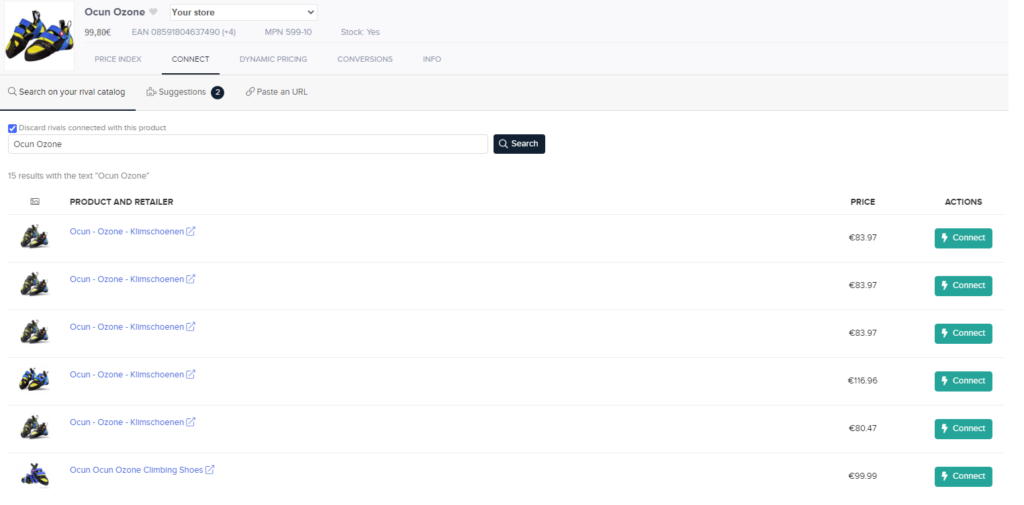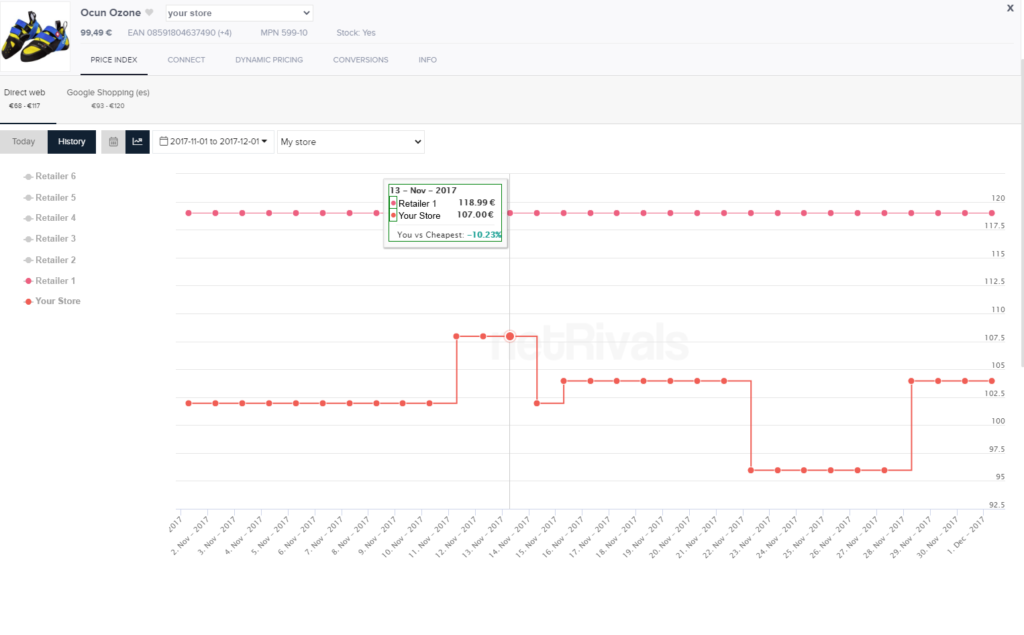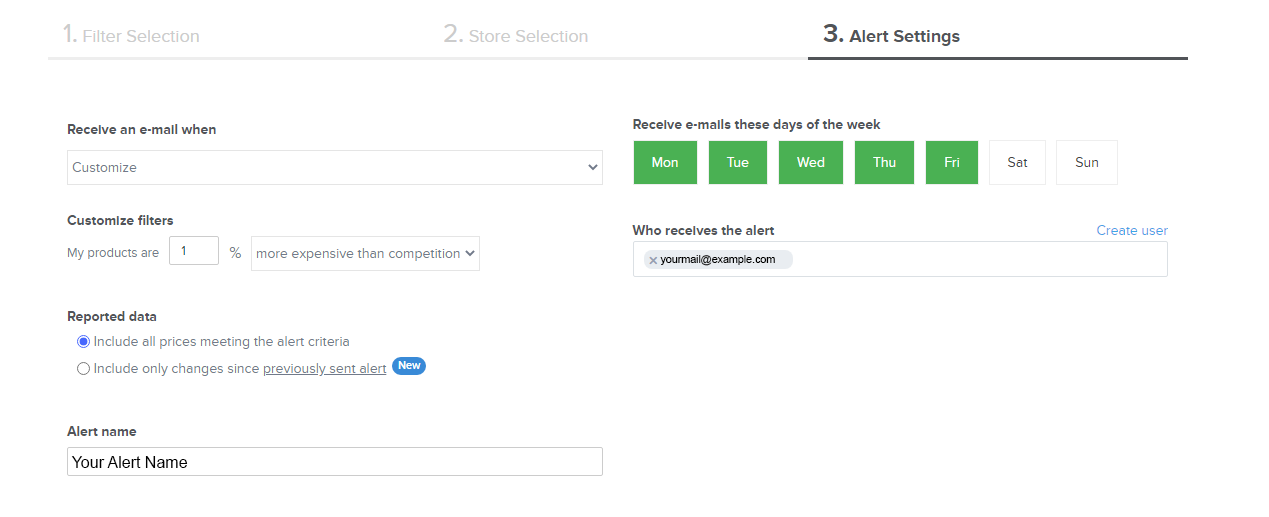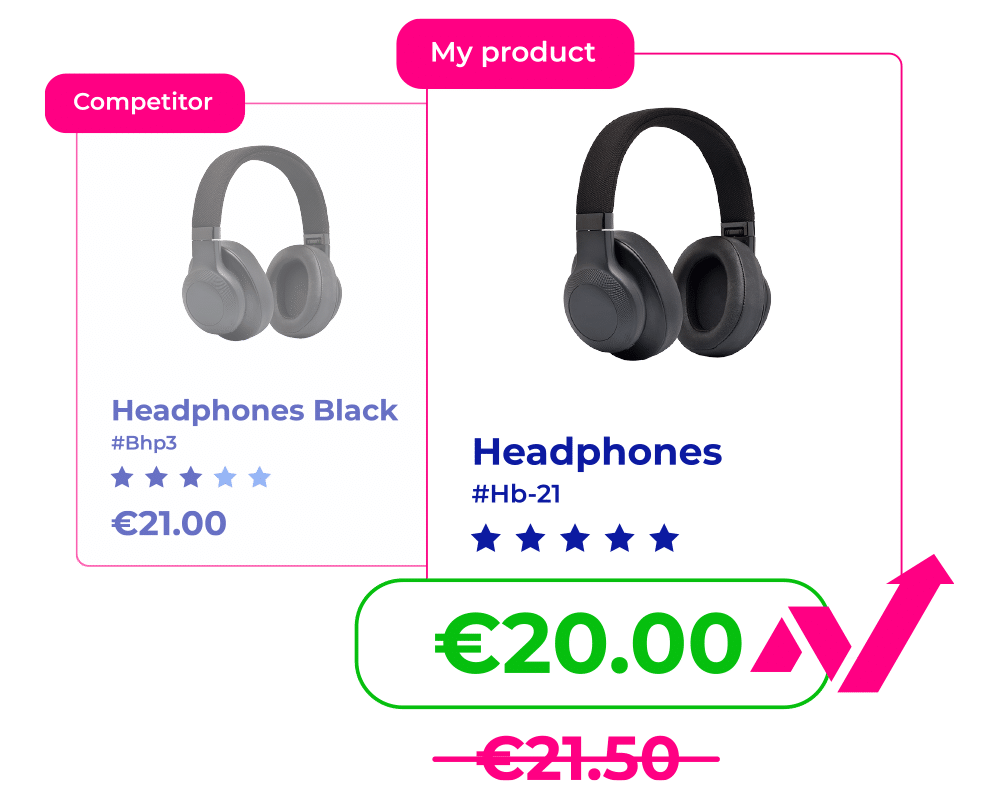As a sporting goods business owner you need to have a comprehensive picture of both your vertical and your competitors, as doing so will give you valuable knowledge with which you can apply better prices and be more competitive. Among the actions you have to take to achieve the necessary information about your competitors is the review of prices and stock. In order to receive price updates from your rivals you will have to track your competitors’ websites on a regular basis, a task that is impossible to do on a manual way.
In this guide we will show you what tools you have at your disposal to get updated prices from your competitors of sporting goods, so you can detect price patterns and anticipate future changes in your vertical.
Connecting with the competition
The first step you have to take is to connect your catalog with the rivals’. It is not efficient to follow those products that you do not have on your list, since you cannot compete against them. The best way to connect products is through a price comparison tool and a reference code, which is usually the EAN. In case you do not have a product code, there are some of these tools that have integrated AI systems that allow you to connect products through images, text, etc. Another option to link products through this solution is to do it manually, inserting each URL of the rival products you want to follow. However, this option is recommended in specific scenarios such as wanting to compare two different products.

Now that you have connected your catalog with your competitor’s you can start analyzing your competitor’s prices. Where does your catalog stand in relation to your competition? Are your prices cheaper, more expensive or the same as your competitors?

Knowing the exact situation of your products with respect to the market and competitors is without a doubt a valuable asset in order to identify the weaknesses of your business and enhance your strengths. Although a static image can give you insight into the state of your vertical, it is preferable to have up-to-date information on the prices of your rivals’ sporting goods.
Updates and alerts
To promote consumption, during the year there are certain dates when retailers offer discounts on their products so that there are more purchases. If you are using a big data tool to monitor prices, you will be able to identify price patterns and anticipate price drops by competitors, which are usually on specific dates, such as Black Friday or Blue Monday.

There are other reasons for your vertical’s rivals to lower their product prices. In the sporting goods industry there are many products that are in constant evolution, such as sneakers or team jerseys, which change every season.
To be able to detect instantly when one of your rivals is lowering prices, which could change your pricing strategy, you have an automatic alert system that sends a report to your mailbox when the competition decreases their products’ prices, so you can react as fast as possible.

You can set these alerts by specific products, product categories or labels. The alerts will be activated according to the standard you have set. For example, you can set up an alert to notify you when a specific competitor is 5% cheaper than your product, or when there is a competitor who has lowered the price of an item you are competing for.
Final Thoughts
For your sporting goods e-commerce to be competitive, it is essential to have a deep knowledge of your vertical and the competitors that make it up. The best way to acquire that information is through observation of the competition’s prices, which will give you an exact idea of your rivals’ movements, help you detect price patterns and become more reactive to market price changes.






